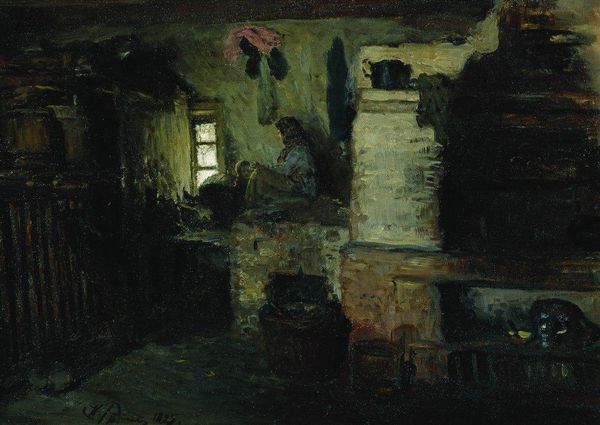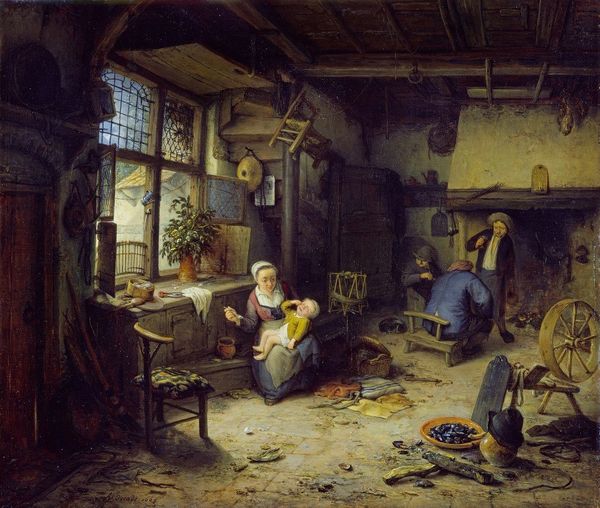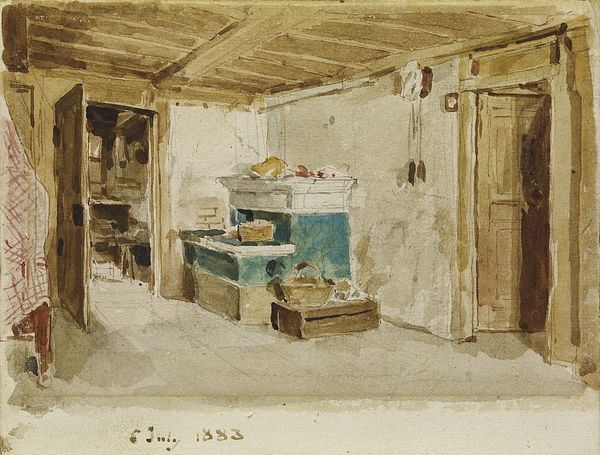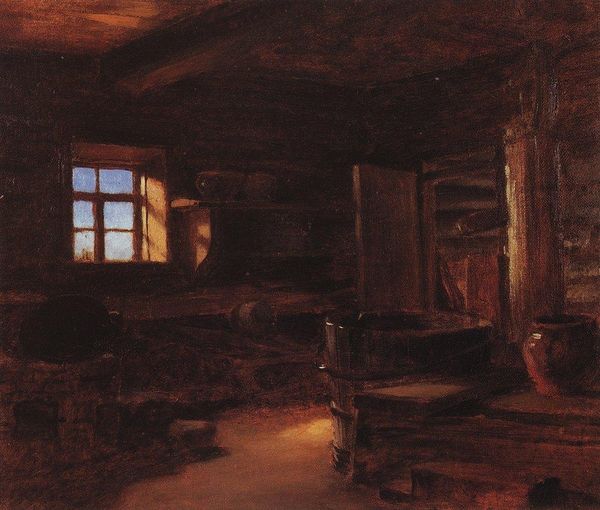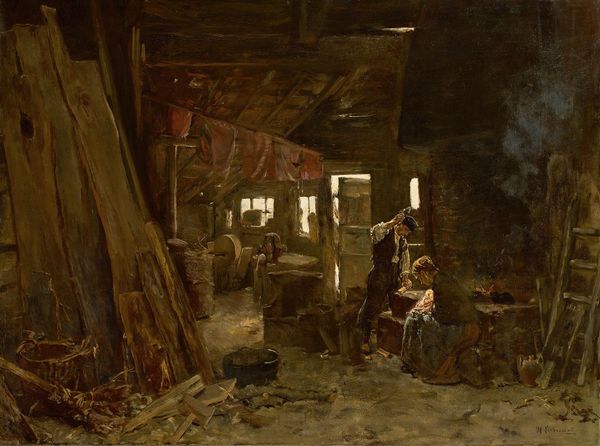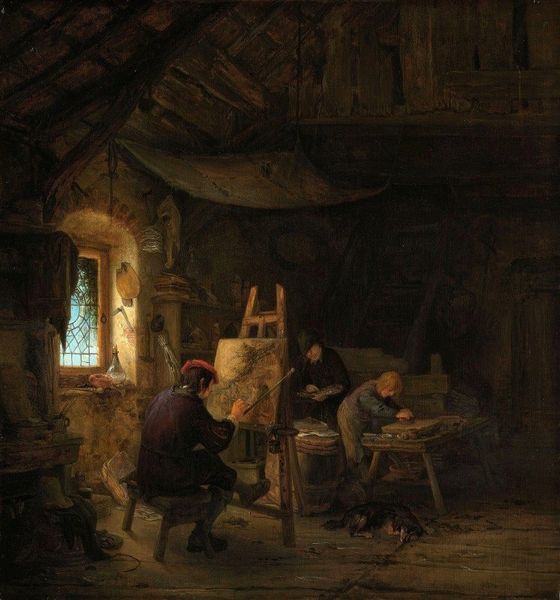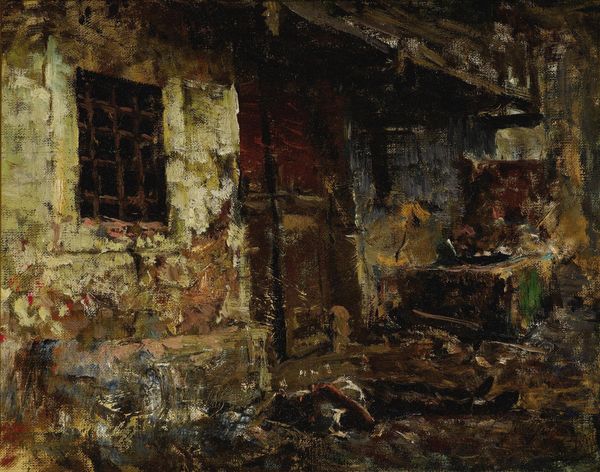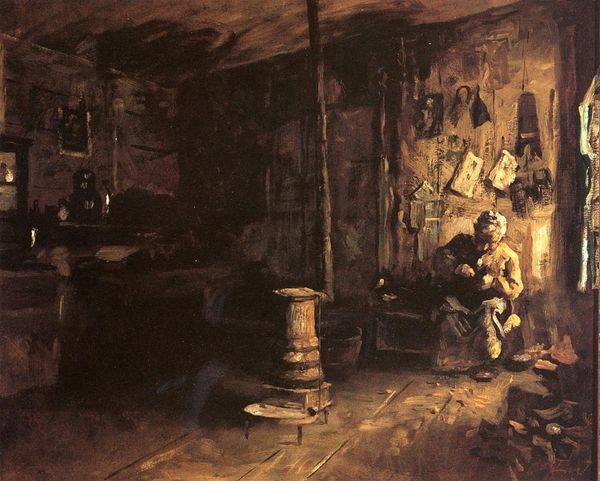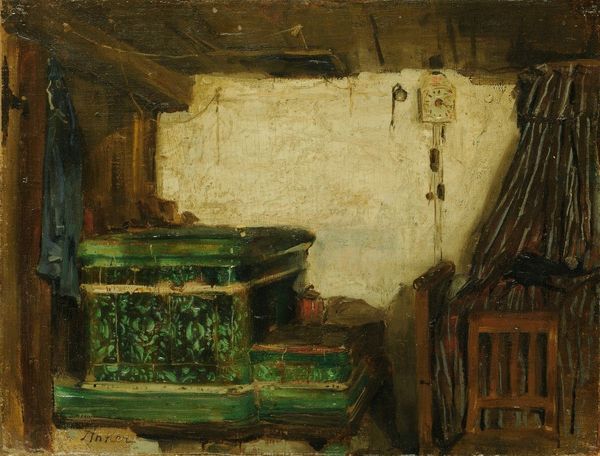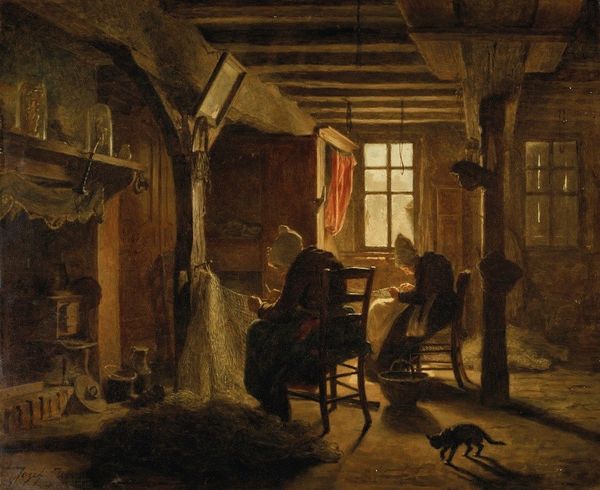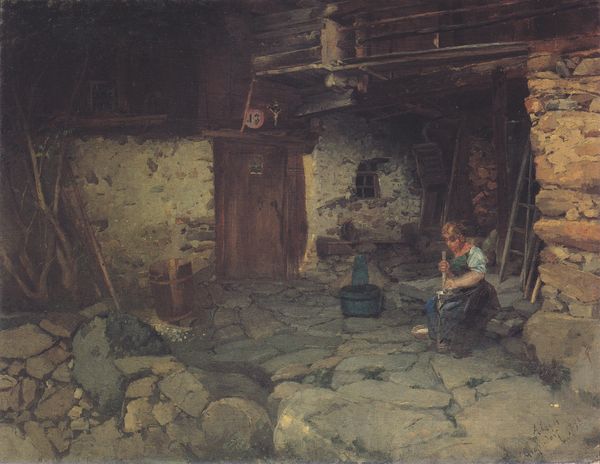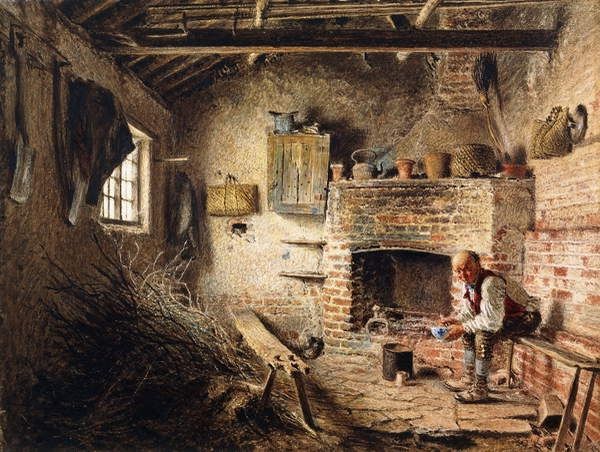
Copyright: Public domain
Eastman Johnson’s intimate “New England Kitchen” offers us a glimpse into 19th-century domestic life. Painted in the United States, the scene likely reflects a conscious effort to capture and perhaps romanticize a disappearing way of life, as industrialization began to transform American society. The hearth, the rough-hewn timber, and the simple furnishings all speak to a self-sufficient, pre-industrial past. Notice how the light from the window illuminates the simple objects, elevating the mundane to the level of art. Johnson, trained in Dusseldorf, brings a European sensibility to an American subject. The painting itself becomes a document, a curated view of a culture in transition. Is this a celebration of rural simplicity or an elegy for what is being lost? To fully understand a work like this, one must delve into archives, diaries, and social histories. Only then can we begin to appreciate the complex interplay between art, memory, and the ever-changing social landscape.
Comments
No comments
Be the first to comment and join the conversation on the ultimate creative platform.
